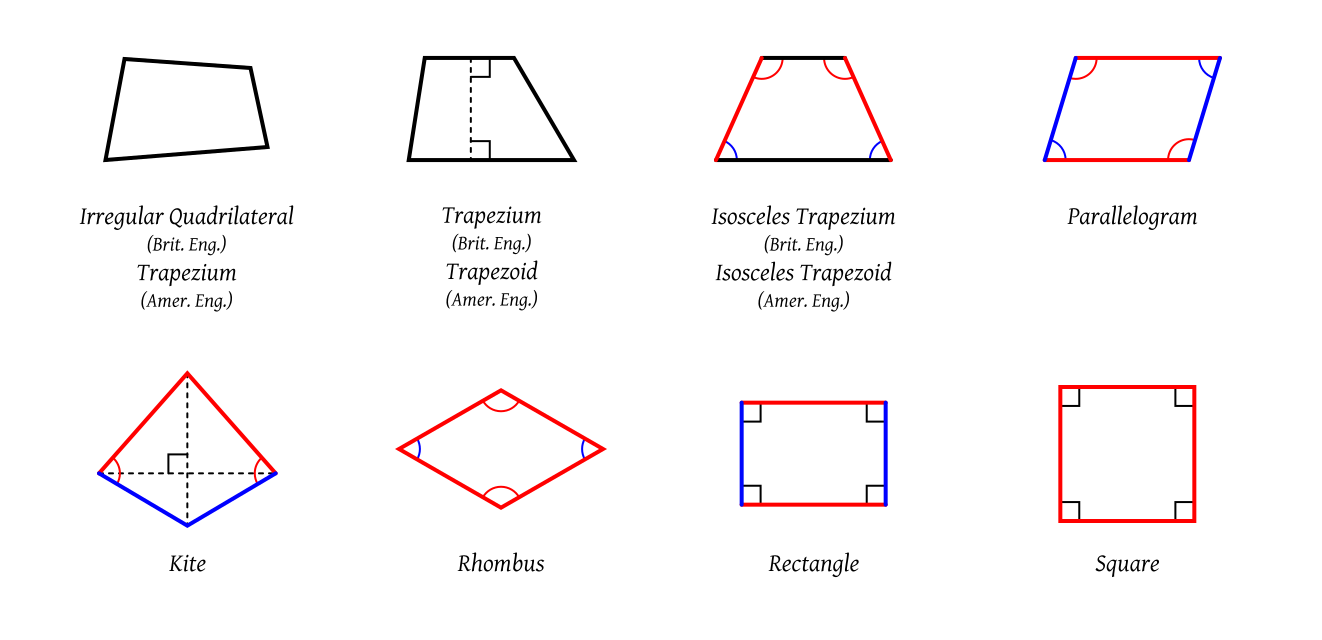What is it that French people do better than all the others? If you would take polls, the top three answers might be: love, wine and whining.
(Laughter)
Maybe. But let me suggest a fourth one: mathematics. Did you know that Paris has more mathematicians than any other city in the world? And more streets with mathematicians’ names, too. And if you look at the statistics of the Fields Medal, often called the Nobel Prize for mathematics, and always awarded to mathematicians below the age of 40, you will find that France has more Fields medalists per inhabitant than any other country.
What is it that we find so sexy in math? After all, it seems to be dull and abstract, just numbers and computations and rules to apply. Mathematics may be abstract, but it’s not dull and it’s not about computing. It is about reasoning and proving our core activity. It is about imagination, the talent which we most praise. It is about finding the truth. There’s nothing like the feeling which invades you when after months of hard thinking, you finally understand the right reasoning to solve your problem. The great mathematician André Weil likened this – no kidding – to sexual pleasure. But noted that this feeling can last for hours, or even days.
The reward may be big. Hidden mathematical truths permeate our whole physical world. They are inaccessible to our senses but can be seen through mathematical lenses. Close your eyes for moment and think of what is occurring right now around you. Invisible particles from the air around are bumping on you by the billions and billions at each second, all in complete chaos. And still, their statistics can be accurately predicted by mathematical physics. And open your eyes now to the statistics of the velocities of these particles.
The famous bell-shaped Gauss Curve, or the Law of Errors – of deviations with respect to the mean behavior. This curve tells about the statistics of velocities of particles in the same way as a demographic curve would tell about the statistics of ages of individuals. It’s one of the most important curves ever. It keeps on occurring again and again, from many theories and many experiments, as a great example of the universality which is so dear to us mathematicians.
Of this curve, the famous scientist Francis Galton said, “It would have been deified by the Greeks if they had known it. It is the supreme law of unreason.” And there’s no better way to materialize that supreme goddess than Galton’s Board. Inside this board are narrow tunnels through which tiny balls will fall down randomly, going right or left, or left, etc. All in complete randomness and chaos. Let’s see what happens when we look at all these random trajectories together.
(Board shaking)
This is a bit of a sport, because we need to resolve some traffic jams in there. Aha. We think that randomness is going to play me a trick on stage.
There it is. Our supreme goddess of unreason. the Gauss Curve, trapped here inside this transparent box as Dream in “The Sandman” comics. For you I have shown it, but to my students I explain why it could not be any other curve. And this is touching the mystery of that goddess, replacing a beautiful coincidence by a beautiful explanation.
All of science is like this. And beautiful mathematical explanations are not only for our pleasure. They also change our vision of the world. For instance, Einstein, Perrin, Smoluchowski, they used the mathematical analysis of random trajectories and the Gauss Curve to explain and prove that our world is made of atoms.
It was not the first time that mathematics was revolutionizing our view of the world. More than 2,000 years ago, at the time of the ancient Greeks, it already occurred. In those days, only a small fraction of the world had been explored, and the Earth might have seemed infinite. But clever Eratosthenes, using mathematics, was able to measure the Earth with an amazing accuracy of two percent.
Here’s another example. In 1673, Jean Richer noticed that a pendulum swings slightly slower in Cayenne than in Paris. From this observation alone, and clever mathematics, Newton rightly deduced that the Earth is a wee bit flattened at the poles, like 0.3 percent – so tiny that you wouldn’t even notice it on the real view of the Earth.
These stories show that mathematics is able to make us go out of our intuition measure the Earth which seems infinite, see atoms which are invisible or detect an imperceptible variation of shape. And if there is just one thing that you should take home from this talk, it is this: mathematics allows us to go beyond the intuition and explore territories which do not fit within our grasp.
Here’s a modern example you will all relate to: searching the Internet. The World Wide Web, more than one billion web pages – do you want to go through them all? Computing power helps, but it would be useless without the mathematical modeling to find the information hidden in the data.
Let’s work out a baby problem. Imagine that you’re a detective working on a crime case, and there are many people who have their version of the facts. Who do you want to interview first? Sensible answer: prime witnesses. You see, suppose that there is person number seven, tells you a story, but when you ask where he got if from, he points to person number three as a source. And maybe person number three, in turn, points at person number one as the primary source. Now number one is a prime witness, so I definitely want to interview him – priority. And from the graph we also see that person number four is a prime witness. And maybe I even want to interview him first, because there are more people who refer to him.
OK, that was easy, but now what about if you have a big bunch of people who will testify? And this graph, I may think of it as all people who testify in a complicated crime case, but it may just as well be web pages pointing to each other, referring to each other for contents. Which ones are the most authoritative? Not so clear.
Enter PageRank, one of the early cornerstones of Google. This algorithm uses the laws of mathematical randomness to determine automatically the most relevant web pages, in the same way as we used randomness in the Galton Board experiment. So let’s send into this graph a bunch of tiny, digital marbles and let them go randomly through the graph. Each time they arrive at some site, they will go out through some link chosen at random to the next one. And again, and again, and again. And with small, growing piles, we’ll keep the record of how many times each site has been visited by these digital marbles.
Here we go. Randomness, randomness. And from time to time, also let’s make jumps completely randomly to increase the fun.
And look at this: from the chaos will emerge the solution. The highest piles correspond to those sites which somehow are better connected than the others, more pointed at than the others. And here we see clearly which are the web pages we want to first try. Once again, the solution emerges from the randomness. Of course, since that time, Google has come up with much more sophisticated algorithms, but already this was beautiful.
And still, just one problem in a million. With the advent of digital area, more and more problems lend themselves to mathematical analysis, making the job of mathematician a more and more useful one, to the extent that a few years ago, it was ranked number one among hundreds of jobs in a study about the best and worst jobs published by the Wall Street Journal in 2009.
Mathematician – best job in the world. That’s because of the applications: communication theory, information theory, game theory, compressed sensing, machine learning, graph analysis, harmonic analysis. And why not stochastic processes, linear programming, or fluid simulation? Each of these fields have monster industrial applications. And through them, there is big money in mathematics. And let me concede that when it comes to making money from the math, the Americans are by a long shot the world champions, with clever, emblematic billionaires and amazing, giant companies, all resting, ultimately, on good algorithm.
Now with all this beauty, usefulness and wealth, mathematics does look more sexy. But don’t you think that the life a mathematical researcher is an easy one. It is filled with perplexity, frustration, a desperate fight for understanding.
Let me evoke for you one of the most striking days in my mathematician’s life. Or should I say, one of the most striking nights. At that time, I was staying at the Institute for Advanced Studies in Princeton – for many years, the home of Albert Einstein and arguably the most holy place for mathematical research in the world. And that night I was working and working on an elusive proof, which was incomplete. It was all about understanding the paradoxical stability property of plasmas, which are a crowd of electrons. In the perfect world of plasma, there are no collisions and no friction to provide the stability like we are used to. But still, if you slightly perturb a plasma equilibrium, you will find that the resulting electric field spontaneously vanishes, or damps out, as if by some mysterious friction force.
This paradoxical effect, called the Landau damping, is one of the most important in plasma physics, and it was discovered through mathematical ideas. But still, a full mathematical understanding of this phenomenon was missing. And together with my former student and main collaborator Clément Mouhot, in Paris at the time, we had been working for months and months on such a proof. Actually, I had already announced by mistake that we could solve it. But the truth is, the proof was just not working. In spite of more than 100 pages of complicated, mathematical arguments, and a bunch discoveries, and huge calculation, it was not working. And that night in Princeton, a certain gap in the chain of arguments was driving me crazy. I was putting in there all my energy and experience and tricks, and still nothing was working. 1 a.m., 2 a.m., 3 a.m., not working. Around 4 a.m., I go to bed in low spirits. Then a few hours later, waking up and go, “Ah, it’s time to get the kids to school –” What is this? There was this voice in my head, I swear. “Take the second term to the other side, Fourier transform and invert in L2.”
(Laughter)
Damn it, that was the start of the solution!
You see, I thought I had taken some rest, but really my brain had continued to work on it. In those moments, you don’t think of your career or your colleagues, it’s just a complete battle between the problem and you.
That being said, it does not harm when you do get a promotion in reward for your hard work. And after we completed our huge analysis of the Landau damping, I was lucky enough to get the most coveted Fields Medal from the hands of the President of India, in Hyderabad on 19 August, 2010 – an honor that mathematicians never dare to dream, a day that I will remember until I live.
What do you think, on such an occasion? Pride, yes? And gratitude to the many collaborators who made this possible. And because it was a collective adventure, you need to share it, not just with your collaborators. I believe that everybody can appreciate the thrill of mathematical research, and share the passionate stories of humans and ideas behind it. And I’ve been working with my staff at Institut Henri Poincaré, together with partners and artists of mathematical communication worldwide, so that we can found our own, very special museum of mathematics there.
So in a few years, when you come to Paris, after tasting the great, crispy baguette and macaroon, please come and visit us at Institut Henri Poincaré, and share the mathematical dream with us.
Thank you.
(Applause)
当然,我不会考虑在一个面包质量不佳的国度彻底定居下来……澳大利亚华裔神童陶哲轩不再是我的竞争对手:他已在上届国际数学家大会上获奖,当时年仅31岁。…到2014年,我已经超龄3个月了。要想拿到“FM”,要么在2010年,要么将永远失去机会。(塞德里克·维拉尼,一个定理的诞生-我与菲尔茨奖的一千个日夜)
Can that really be Cedric Villani open-necked and without his araignée? Timothy Gowers @wtgowers




























